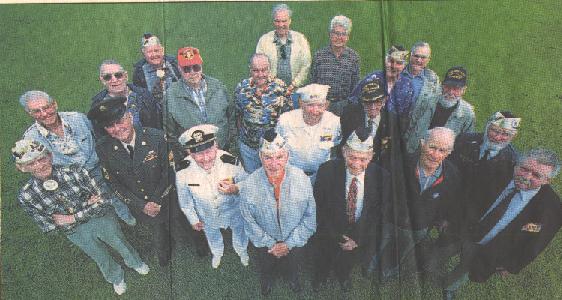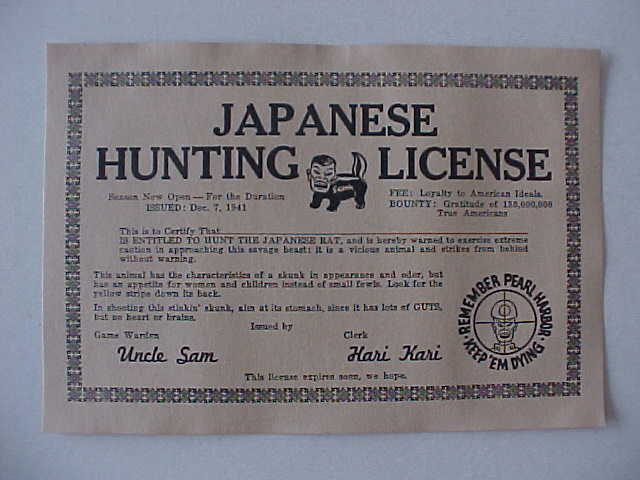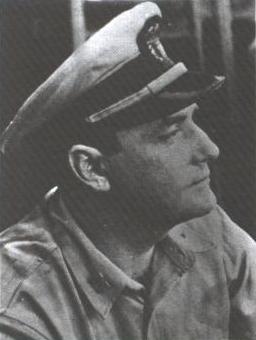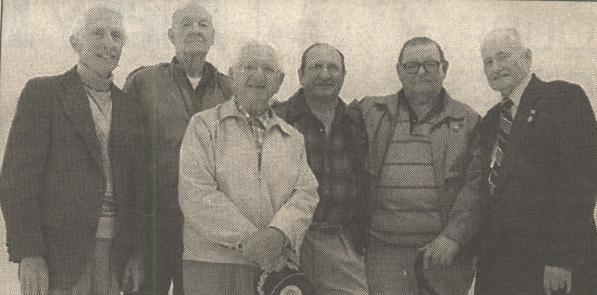">
">
">
">
"Praise the Lord and Pass the Ammunition", was written by Frank Loesser. According to the song a chaplain ("sky pilot") was with some fighting men who were being attacked by an enemy. (Generally given at the time to be the Japanese at Pearl Harbor.) He was asked to say a prayer for the men who were engaged in the firing at the on-coming Japanese planes. The chaplain; the song went on to infer, put down his bible, manned one of the ship's gun turrets and begin firing back, saying, "Praise The Lord and pass the ammunition". Now; however, there are now facts available setting the story straight. According to the writer, Jack S. McDowall, through the years the lyrics of the song have generally credited "a chaplain" manning the gun turrets of a ship, while under attack. "This was not true", says, McDowell. |
">
">
">
">
">
">
">
">

For some time, long after the attack at Pearl Harbor, stories and reports continued to pop-up about the incident, involving a chaplain who was to have uttered the now famous words, "Praise the Lord and pass the ammunition." These stories eventualy made their way through the servicemen back to the press. The press, as McDowell noted, . . . led some writers erroneously to identify other chaplains as authors of the phrase. Nonetheless, the real Chaplain, Howell Forgy, aboard the U.S.S. New Orleans; during the Japanese attack, was that Chaplain. He was a Lieutenant (j.g.) on that Sunday morning in December, 1941. Another Lieutenant who had been in charge of an ammunition line on the USS New Orleans during the attack remembered. "I heard a voice behind me saying, Praise the Lord and pass the ammunition. I turned and saw Chaplain Forgy walking toward me along the line of men. He was patting the men on the back and making that remark to cheer them and keep them going. I know it helped me a lot, too", he said. Another Lieutenant j.g. said, the men aboard the USS New Orleans would thereafter kid Chaplain Forgy about the role he played whenever they heard the song that had been written. They also encouraged him to set the record straight as to who actually said what. According to that same Lieutenant the Chaplain would decline saying he felt "the episode should remain a legend rather than be associated with any particular person." Author McDowell said that press reporters were eventually permitted to interview men of the U.S.S. New Orleans involved in the "ammunition" story. Chaplain Forgy's superior officers set up a meeting with some of the press and; at last, the the real story of the wonderful song and the wonderful man who had inspired it was finally confirmed. The preceeding information was provided by Henry Wristen, President of the U.S.S New Orleans (CA-32) Reunion Association. The Song Down went the gunner, a bullet was his fate Down went the gunner, then the gunners mate Up jumped the sky pilot, gave the boys a look And manned the gun himself as he laid aside The Book, shouting Praise the Lord and pass the ammunition! Praise the Lord and pass the ammunition! Praise the Lord and pass the ammunition and we'll all stay free! Praise the Lord and swing into position! Can't afford to sit around and wishin' Praise the Lord we're all between perdition and the deep blue sea! Yes the sky pilot said it You've got to give him credit for a son - of - gun - of - a - gunner was he, Shouting; Praise the Lord we're on a mighty mission! All aboard, we're not a - goin' fishin; Praise the Lord and pass the ammunition and we'll all stay free! |
">
">
">
">
Casualties of the Attack |

">
">
">
">
Bremerton Pearl Harbor Survivors (Front L-R) Robert Farnham, Perry Bartram, Henry Long, Fleet Hamby, Bill Turnbull, Frank Mattausch, Arthur Rolfe, Leo Proteau, (Row 2 L-R) Fred Ray, Don Lovegrove, Roy Capps, Fred Westford, George Smith, Sam Salmon, Albert Arcand, (Row 3 L-R) Robert Bennett, Kenneth Freeberg, Joseph Stenstrom, Bob Reese and Merion Myers. Picture provided by Merion Myers |
Picture provided by Lester Ritchie - Survivor |
">
">
">
">
">
">
">
">
Memories of Pearl Harbor Pictures provided by John J. Iantorno - Survivor |
">
">
">
">
Blue Star Mothers Who are the Blue Star Mothers of America? Contact Information |

After the Japanese attacked Pearl Harbor on December 7, 1941 ("a date which will live in infamy"), a major question was whether or not they would invade Hawaii sometime fairly soon afterwards. The U.S. government was concerned that American currency circulating in the Islands might fall into hostile hands and be used against the Allied Forces in the war effort. So, in 1942 a special issue of currency was prepared by the Bureau of Engraving and Printing, with a reddish-brown Treasury Seal (instead of the usual blue or green) and with HAWAII printed in small letters in two places on the front of the bill and in large letters on the back. These bills were then used in Hawaii for the duration of the war. If the Japanese had invaded, then all of this special Hawaiian-issue currency would have been demonetized and would not have been honored by the Treasury. As it turns out, the Japanese invasion of Hawaii never materialized, and this currency is still legal tender today-- not to mention that it's also a very interesting and popular collectible. |
">
">
">
">

">
">
">
">

Howell M. Forgy |

Pearl Harbor Survivors Tom O'Reilly, Lloyd Hunt, Ted Franco, Ernest Ruiz, M.R. Coleman and Kenneth Todd |
">
">
">
">
"The center of the ship just opened up like a big flower, blew up inside. Tons and tons of ammunition, explosives, boilers, everything blew sky-high. A battleship over 600 feet long, it actually raised it out of the water and with such force that we couldn't standI started seeing people that had gone through the fire, through that blast, had no clothes on, some without arms or with their legs blown off." -- Russell J. McCurdy - USS Arizona Survivor |
"We picked up one man from the California and he was badly burnt. His arms, his face and the lower part of his legs; he was in real bad shape. We took him over to the hospital dock. He wanted a cigarette so we gave him one and lit it for him. When I took the cigarette out of his mouth, part of his lip came right out with it." -- Ray Mapes - USS Argonne Survivor |